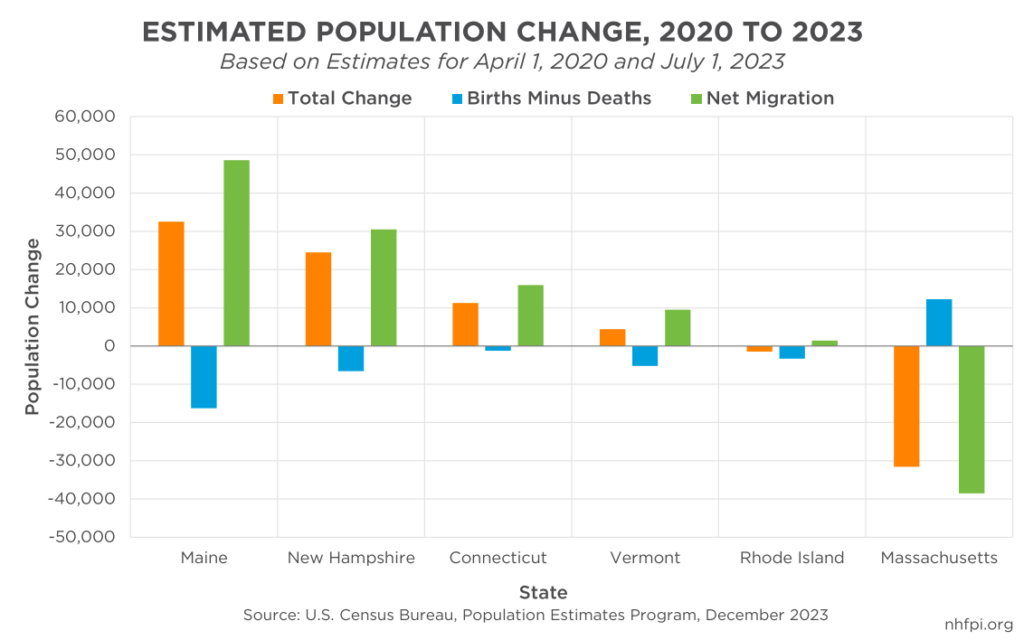New U.S. Census Bureau data released on December 19, 2023 show that New Hampshire’s population continues to grow, and Maine’s population has been the fastest growing in New England between April 1, 2020 and July 1, 2023. Between those dates, Maine grew by about 32,500 residents (2.4 percent), while New Hampshire added an estimated 24,500 (1.8 percent). In both states, population growth relied on migration; New Hampshire had approximately 6,600 more deaths than births, while Maine had about 16,300 more deaths than births among residents within the state’s borders. Connecticut and Vermont also had overall population growth driven by migration, while Rhode Island’s population changed little during this time period and Massachusetts lost 31,500 residents (0.4 percent) in total, despite being the only New England state with more births than deaths.
While the COVID-19 pandemic has spurred migration to more rural areas nationwide, the pandemic’s effects appear to be diminishing. Data comparing populations from July 1, 2022 to July 1, 2023 show Massachusetts added the most population (18,700; 0.3 percent) of any state in New England that year, primarily due to international migration, while both Connecticut (8,500; 0.2 percent) and Maine (6,400; 0.5 percent) added more than twice as many people as New Hampshire (3,100; 0.2 percent). While it slowed considerably in the most recent data, estimates suggest international migration accounted for about half of all New Hampshire population growth from 2010 to 2022. The Granite State’s housing shortage may be limiting the number of migrants, both from other states and internationally.
Previously-released U.S. Census Bureau data indicated about 6,500 more people moved from New Hampshire to Maine than the other direction between 2021 and 2022.

